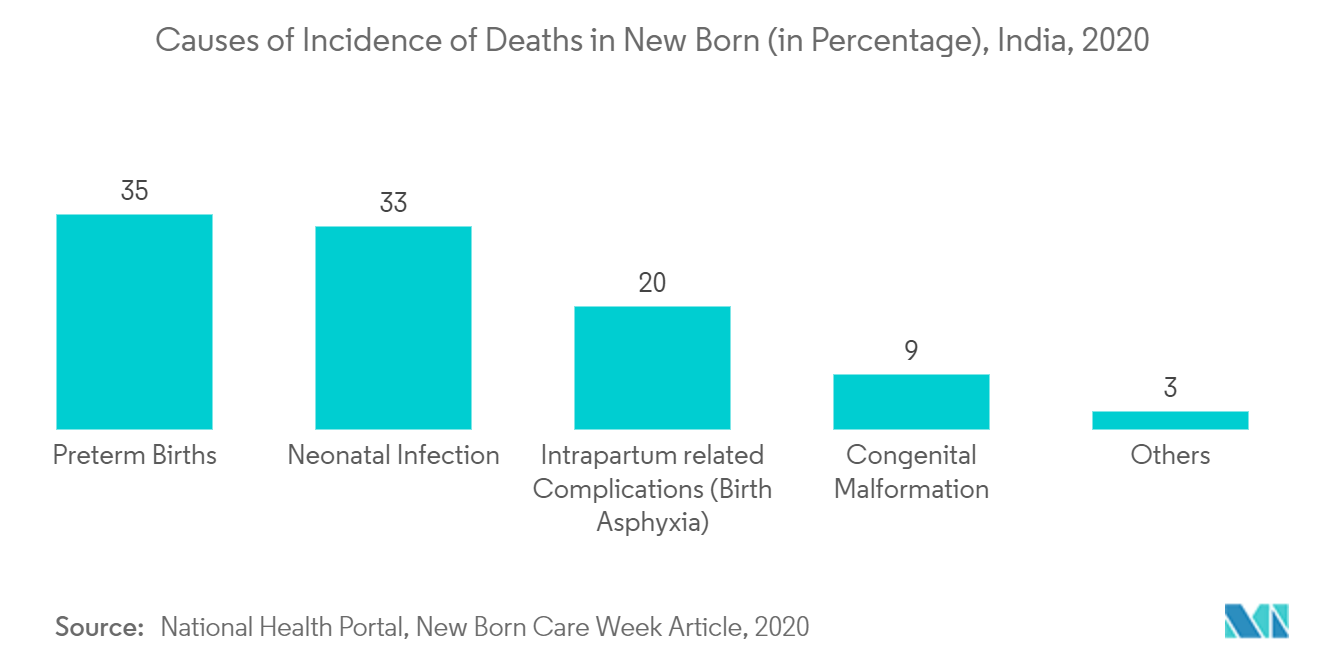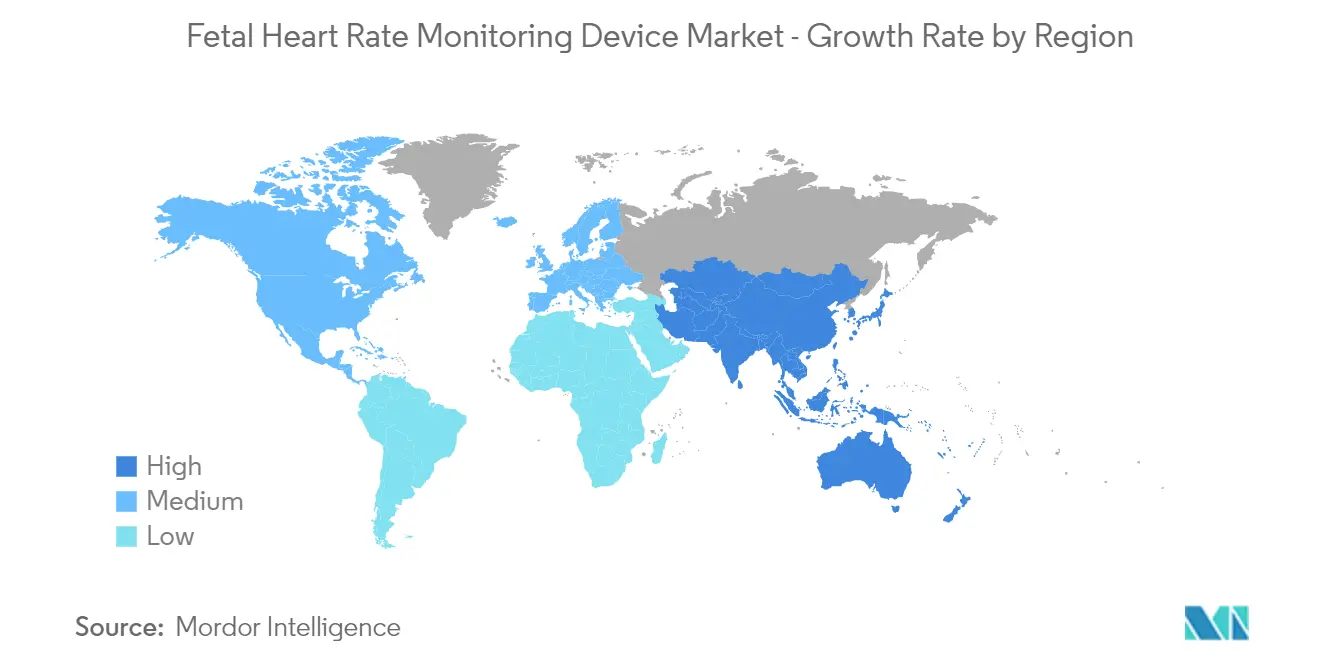Market Trends of Fetal Heart Rate Monitoring Device Industry
This section covers the major market trends shaping the Fetal Heart Rate Monitoring Devices Market according to our research experts:
Internal Heart Rate Monitoring Devices Segment is Expected to Witness Growth over the Forecast Period
Internal fetal heart rate monitoring uses an electronic transducer connected directly to the fetal skin. A wire electrode is attached to the fetal scalp or another body part through the cervical opening and is connected to the monitor. This type of electrode is sometimes called a spiral or scalp electrode.
Many technologically advanced medical device organizations are planning to launch such devices or are on the verge of launching them. These wireless or cableless monitoring devices have made prenatal care a better experience, especially in developing countries with a shortage of obstetricians and gynecologists. Additionally, the use of a wireless fetal monitor that can transmit fetal heart rate data via Bluetooth was piloted among healthy patients undergoing labor induction at term and allowed home monitoring for 24 hours. The use of wireless fetal monitoring technology in the home may be found feasible and acceptable to pregnant women. The instrument, like HeraBEAT (smart fetal doppler with data sharing) by H-cube (Her Healthcare at home), enables the expecting mother to hear and monitor the fetus's heart rate and share it with health practitioners. Thus, with the support of technologically advanced solutions for providing better prenatal care, the demand for wireless fetal heart rate monitoring devices is expected to grow in the future.
For instance, according to the article titled 'Neuroblastoma Treatment' published in February 2022, the prevalence of neuroblastoma is about 1 case per 7,000 live births. The incidence is 10.54 cases per 1 million annually in children younger than 15 years. As per the same source, about 37% of patients are diagnosed as infants, and 90% are younger than 5 years at diagnosis, with a median age at diagnosis of 19 months. Such a high burden of disease is propelling the growth of the market.
Thus, due to the aforementioned developments, the market is expected to witness significant growth over the forecast period.

North America is Expected to Witness Growth over the Forecast Period
North America, along with the United States and Canada, is found to have one of the most well-structured, developed, and advanced healthcare systems in the world. With high R&D expenditure for fetal and neonatal care devices, governments of the North American region are also promoting small setups for healthcare research. Therefore, many companies are encouraged to operate in the region, allowing North America to dominate the market across the world.
According to the November 2021 update by the CDC, in 2020, preterm birth affected 1 in every 10 infants born in the United States. It also reported that the rate of preterm birth among African-American women (14.4%) was about 50% higher than the rate of preterm birth among white or Hispanic women (9.1% and 9.8%, respectively). Since infants who are born preterm are at an increased risk of heart complications, fetal heart rate monitoring device helps in the monitoring of the conditions, thereby driving the growth of the market.
Moreover, the increasing funding from government organizations for research and development activities in the United States is a major contributing factor to the market's growth in this region. Furthermore, continuous advancements in technology, growing awareness in patients about cardiac monitoring, well-established healthcare infrastructure, and favorable reimbursement policies are expected to boost the cardiac monitoring market in the North American region. For instance, in July 2021 Abbott launched Jot Dx, the insertable cardiac monitor (ICM), in the United States. This technology allows for remote detection and improved diagnostic accuracy of cardiac arrhythmias in patients.
Therefore, owing to the aforementioned factors, the growth of the market studied is anticipated in the North American region.


